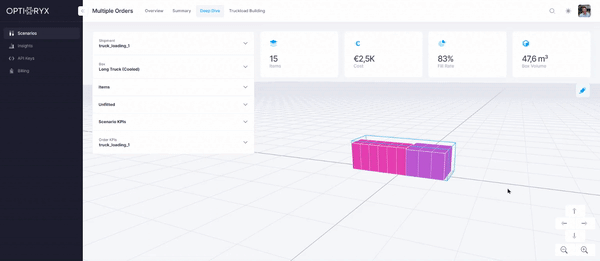According to Allied Market Research, the global freight trucking market was valued at $2732 billion in 2021 and is projected to reach $4457 billion by 2031, growing at a compound annual growth rate of 5.1%.
The growth of the global freight trucking industry has been driven by the increase in international trade, e-commerce, and the consumer's growing demand for fast delivery. With large amounts of goods handled annually, companies face significant challenges in optimizing cargo volume while adhering to various constraints, all within tight timeframes.
To address these challenges on top of rising costs, many companies that ship goods are turning to technology that gets rid of operational inefficiencies, such as shipping air.
Learn To Hate Air
Shipping less air is a strategy that reduces costs throughout your entire supply chain. A famous example of this is IKEA and their quote “We hate air.”
By introducing disassembled furniture in 2010, IKEA successfully eliminated a significant amount of unnecessary air and reduced their package size by 50%.
This innovative approach enabled them to eliminate approximately 7,477 trucks from the roads each year, resulting in reduced transportation costs and a huge step towards sustainability.
Although this example is specific, even a small portion of this success would represent a significant advancement toward achieving improved load planning efficiency and cost-effectiveness.
The Way of Load Planning Today
Transportation teams within shipping companies are responsible for the task of moving loads from one distribution center to another. These loads can consist of anywhere from 50 to 500 items, often palletized or containerized with a multitude of different shapes, each with its own unique dimensions and constraints, further adding to the complexity of the challenge.
But more often than not a lot of these loads consist of boxes filled with air which can be seen by the amount of void fillers used in packaging.
Guess who's paying for it. It's you.
These items originate from different shippers, resulting in a diverse range of requirements.
- Rotational constraints,
- Stackable constraints,
- Priority levels (loading sequences),
- Maximum weight limit (and weight distribution).
Currently, a solution many companies opt for is carrying the tasks out manually, relying on pen and paper or basic rule-of-thumb calculations.
Human load planners rely on their expertise and experience to create loading plans, but the complexity of the task makes it nearly impossible for them to achieve optimal solutions.
Manual load planning challenges your bottom line, resulting in increased labor costs, delays, inventory holding expenses, equipment maintenance issues, and customer satisfaction at risk.
Consequently, upon new information, the team is forced to constantly make adjustments and rearrangements, resulting in significant time wastage and the potential risk of violating client constraints.
This leads to approximately 30% of empty space within a truck, and truck utilization rarely exceeds 60%. Given that fuel costs account for over 20% of a trucking company's operating expenses, there is a clear and compelling incentive to enhance both utilization and efficiency.
How To Be More Cost-Efficient
A solution for cost efficiency is the automation of load planning which eliminates the complexity and takes away a heavy burden from the load planner and operator.
An optimal load plan that respects all safety and customer constraints is available at the click of a button.
Our load planning software, Optioryx3D, ingests input information on the load, including dimensions, weights, and constraints, and instantly provides the optimal load plan and detailed step-by-step loading instructions. Hence, the operator has a clear loading strategy indicating where each item needs to be loaded, with exact coordinates.
With the load planning solution, you don’t need to think about cargo requirements and vehicle characteristics, or how you're going to group destinations together, all while dealing with re-planning due to disruptions and emergencies.
On top of assistance during loading operations you also have the ability to plan for capacity days in advance:
- Forecast how many parcels or pallets will fit in a truck to fulfill an order
- Consequently, forecast shipping or transportation cost
- Reduce transport costs by finding the optimal load plan
- minimize the number of vehicles used
- find the right vehicle types for your orders
- Increase the fill rate of your available space

If using our truckload planning tool, companies can transport the same items while ordering 10% fewer trucks compared to manual planning, which we believe is a conservative estimate, this would save businesses $217 billion worldwide, based on trucking freight revenue in 2021.
Want to try Optioryx3D on your own data?


